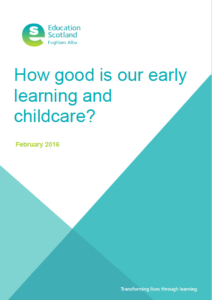QI 2.1 p37
The setting has been designed to empower children to actively experience play and learning challenges centred on their needs and interests. Opportunities are well matched to the stages of development of children and promote fun, learning and independence.
p38
There are safe, cosy spaces indoors and out where children can rest or sleep as needed.
Children benefit from social spaces that are designed around them. The layout enables children’s privacy to be respected.
The setting stimulates children’s natural curiosity, and they have fun as they develop their skills in understanding, thinking, investigation and problem solving.
p39
The design of the setting enables children to be independent and make choices. Children are encouraged to take positive risks which support them to develop skills for life.
Children know that they are listened to and that their views matter. They have a key role in shaping the environment and their experiences.
Well-resourced play areas and experiences support and extend children’s learning in all areas. The extensive range of interesting materials, access to nature, tools and open-ended resources enable big scale and small world play. This engages children’s curiosity and challenges their thinking.
QI 2.1 p41
Challenge questions
How can we be confident that our setting maximises opportunities for children to be challenged, creative and engaged in their play and learning?
In what way does the design of our setting enable children to be independent and make choices, shaping their individual play and learning needs?
How effective are we at using current and national practice to effectively capture and extend children’s play and learning opportunities?
QI 2.2 p43
The setting is very comfortable, furnished to a very high standard and welcoming, with plenty of natural light and ventilation.
Spaces reflect children’s current interests and curiosities, with appropriate resources and materials to support learning.


